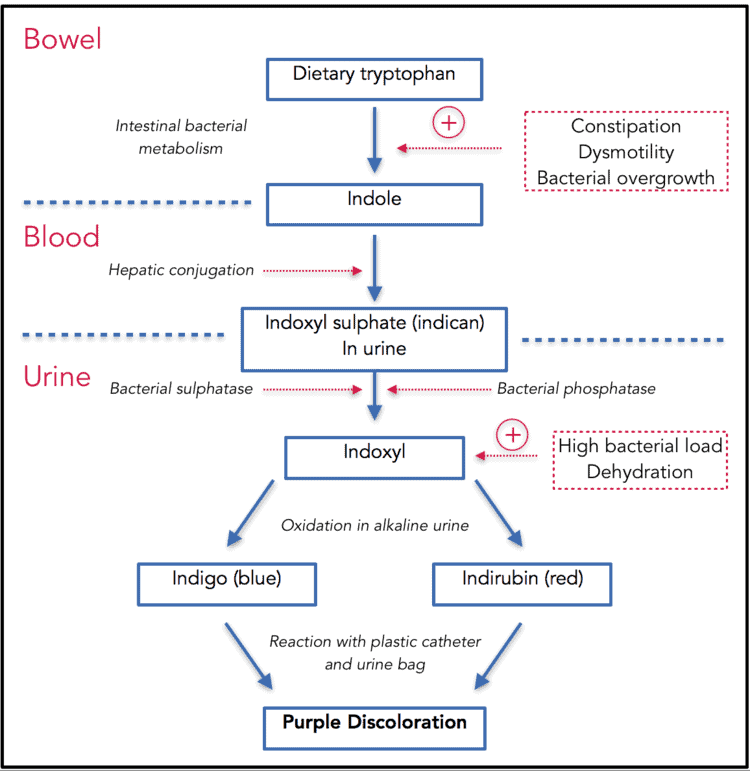Overview of purple urine bag syndrome
Purple urine bag syndrome (PUBS) is a complication of urinary tract infections (UTIs) characterized by the discoloration of catheter bags and tubing. It is unsettling for patients, families, and clinicians, yet it is a benign phenomenon in and of itself. PUBS is the result of UTIs caused by particular bacteria that generate sulphatases and phosphatases. These enzymes cause the tryptophan metabolism to produce indigo (blue) and indirubin (red) pigments, the combination of which is purple. In this scenario, however, the presence of PUBS may imply a urinary cause of sepsis. Since it was first documented in 1978, the number of cases has increased, which is attributed to an aging population.
In contrast to conventional UTIs, those linked with PUBS are more likely to be asymptomatic, yet culture may reveal much larger bacterial loads (1–2 logs) than in individuals without the syndrome.
Brief background
PUBS was discovered centuries ago when medics treating King George III for constipation saw his blue urine. Historically, this has been attributed to porphyria, gentian-containing medications, and severe constipation. However, the phenomenon was not recorded in the medical literature until 1978. Some estimates suggest a prevalence of 9.8 percent or more among hospitalized patients with long-term urinary catheters, notwithstanding their rarity. Additionally, these individuals may acquire catheter-related urinary tract infections (CAUTI).

Which bacteria are involved?
Pseudomonas aeruginosa, Proteus mirabilis, Klebsiella pneumoniae, Morganella morganii, Escherichia coli, Providencia species, Enterococcus species, and others have been linked to PUBS.
Signs and symptoms
In addition to discoloration in the urine bag, catheter, or urine, the signs and symptoms of PUBS may resemble those of a urinary tract infection and include:
- Increased urinary frequency
- Pain during urinating
- Mild low-back discomfort or other aches
- Fatigue
- Fever or shivering
- Urinary leakage or increased need for catheterization
- Nausea
- Headache
- Blood in the urine or sediment
- Urine with a bad odor or a cloudy appearance
Risk factors of PUBS
- Advanced age
- Improper cleanliness of the implanted foley catheter
- Female gender
- Persistent constipation
- Chronic UTI
- Hospitalization
- Dementia
- End-stage renal disease
Diagnosis
- Routine medical evaluation of urine (Urinalysis)
- Urine culture
- Test of renal function
- If sepsis is suspected, blood culture and inflammatory markers are ordered.
Treatment
- Manage underlying conditions, such as constipation, dementia, urinary tract infection, chronic kidney disease, etc.
- Replace urinary catheters on a regular basis.
- Treat UTIs with the correct medications.
- Monitor fluid balance.
- Treat complications, such as sepsis, if present.



